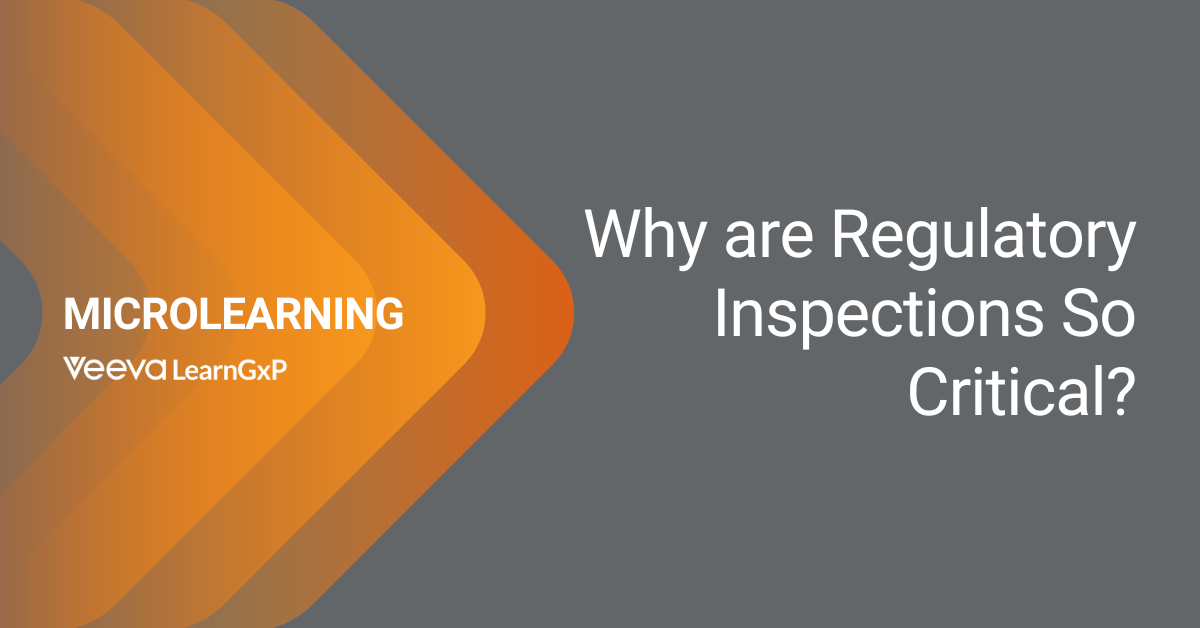After the recent announcement and publication of Article 47 of Directive 2001/83/EC on the Community code relating to medicinal products for human use and Article 51 of Directive 2001/82/EC for comments from Industry, Contract Manufacturing Organizations (CMO’s) from Asia are facing renewed regulatory heat. This paper discusses the Quality agreement considerations between the Contract giver and Contract acceptor. There is a greater requirement of stepping up in Quality agreements between the acceptor and giver considering all legal and regulatory implications to enable the products maintains quality and usage without compromising on the GMP regulations of both in the origin country and in country those are imported & used.
The latest EC guidance Chapter 7 has been revised taking the view of ICH Q10 pharmaceutical quality system. This further states that “Any activity covered by the GMP Guide that is outsourced should be appropriately defined, agreed and controlled in order to avoid misunderstandings which could result in a product or operation of unsatisfactory quality. There must be a written Contract between the Contract Giver and the Contract Acceptor which clearly establishes the duties of each party”.
During the past there are several cases where conflicts and misunderstandings were also raised which lead to disruption in relationships between organizations. The root cause of such conflicts is a lack of understanding about Quality agreements and its implication on the regulatory levels when a product is supplied to a Contract giver by a Contract Acceptor. These agreements will ensure that at no point compromise occurs on Good Manufacturing Practices (GMPs) during selection of raw materials, components, manufacturing process and controls, testing, release, quality, documentation and in supply chain of quality Pharmaceuticals and Biopharmaceuticals.
The EU Guidance
7.11 clearly defines and discusses the relationships between the Contract giver and Contract acceptor and at no point in time the Second party (Contract Acceptor) should outsource to a Third party without the Contract Giver’s prior evaluation and approval of the arrangements. This point is well taken into consideration after clear understanding about the dynamics of product manufacturing activities when outsourced in the third world countries.
This document defines the roles and responsibility of each party to maintain the standards of manufacture and supply of quality healthcare products and connected activities.
Point 7.1 details that “There should be a written Contract covering the outsourced activities, the products or operations to which they are related, and any technical arrangements made in connection with it”, Point 7.13 “The Contract Acceptor should understand that outsourced activities, including contract analysis, may be subject to inspection by the competent authorities”.
This brings a specific case to all outsourced activities like
- Maintenance, Security, Archival and Retrieval of all documentation in a secured outsourced server or on a Cloud
- Outsourcing of all quality and validation documentation
- Maintenance, Qualification, Validation & Calibration activities (Facility, Equipment, Process, Method Validations..etc)
- Storage and transport (Monitoring stability during transportation)
- Label printing (Includes proper proof reading and release of labels in different languages)
- Release activities (e.g. by external QPs) and GMP audits by other parties
ICH Q7
ICH Q7 (Section 16 -CONTRACT MANUFACTURERS (INCLUDING LABORATORIES) Defines “There should be a written and approved contract or formal agreement between a company and its contractors that defines in detail the GMP responsibilities, including the quality measures, of each party”.
Although the word “manufacture” was defined in the ICH Q7a GMP Guide to mean “all operations of receipt of materials, production, packaging, repackaging, labeling, re-labeling, quality control, release, storage, and distribution of APIs and related controls”, nevertheless the words “and laboratories” were added to the title of this chapter to make it perfectly clear that this chapter also applies to any laboratory which might carry out any analysis for the API manufacturer according to a specific request or agreement.
This takes direct implication on GMP procedures that are taken by the Contract Acceptor such as:
- Prevention of Cross contamination
- Validation activities and Records
- Use of dedicated facilities
- Traceability of all materials and components purchased ,used and remaining.
- Process controls and documents regarding batches
- Cleaning validations and frequencies
- Procedures and controls involving in packing, labeling and storage
- Sterilization activities (Especially in case of sterile APIs and their processes as per new Guideline on process validation guidance relates to specific terms such as Conventional pharmaceutical processes incorporating new technologies.
- Specifically to Contract Laboratories regarding Qualification and Experience of their staff directly involved in analysis and record keeping.
Medical Device Directive 93/42/EEC Including Directive 2007/47/EC
Medical Device Directive 93/42/EEC Including Directive 2007/47/EC requires that the manufacturer of medical devices keeps a product-related, adequate and efficacious quality system. All the elements, requirements and provisions adopted by the manufacturer for his quality system must be documented in a systematic and orderly manner in the form of written policies and procedures such as quality programs, quality plans, quality manuals and quality records.
Who should use make and use quality agreements?
| Contractor | Service rendered |
|---|---|
| Third party Manufacturer | Manufacturing of API, Formulations etc |
| Second party Manufacturer | Manufacturing of API, Formulations, Medical devices etc |
| Contract Testing Lab | Companies dealing with Testing Raw materials or APIs or Finished formulations, Assays/Bio-assays, Endotoxin limits, Toxicological studies, Water testing etc |
| Documentation services | Companies supplying IT products and services and or hosting documentation solutions on independent servers or on cloud networks. |
| Single use Equipment/Disposable Manufactures or Suppliers | Companies those sell Single use Bioreactors/Filters (NFF-UF-TFF modules)/bags/filling modules etc |
| Transportation & Logistic Services | Companies that ship healthcare products and thermal sensitive biological and blood products worldwide. |
| Stability testing Labs | Companies that Test, Store and Retrieve stability samples of Pharmaceutical and Biological products. |
| Equipment Fabricators and Welders | Fabricators of equipment using specific contact parts like Teflon, stainless steel or special polymers that are custom made for special operations. |
| Validation and Calibration Services | Companies dealing with validation activities of computers, SCADAs, Facility, Equipment, Utilities and Calibration of various parts and gauges. |
| Cleaning & Disposal handling | Companies dealing with special type of cleaning in Bulk and Biopharmaceutical facilities and handling highly toxic or potent or Biologically active disposable materials. |
| Excipient supplier | Companies or dealers or distributors supplying Excipients including FDA certified contact part lubricating agents like oils and grease. |
| Raw material | Suppliers dealing with various raw materials including Primary packing, Secondary packing, Shippers, Labels, Pouches, Plastic/UPVC/PVC drums/bottles, Tin foils, Printed leaflets, Glass Bottles, Caps, Bungs, Tubes, Drums, Glass vials, Prefilled syringes, Inks etc |
| Auditors and Regulatory Filing | Companies that deal with auditing a company well before regulatory approval inspections as external auditors or dealing with training Staff and or dealing with regulatory filing e-CTDs in various countries to get product approved. |
Points That Should be Mentioned in Quality Agreements
Responsibilities
- Each party must understand if the contractor has any intentions of assigning responsibility of any work to a third party (subcontractor)
- The sponsor should always be notified in advance of using a subcontractor
- The project sponsor should always have the right to audit a subcontractor and must provide prior written authorization to use a subcontractor
Qualified Person
- Minimum Educational qualification
- Training
- Experience
- Batch control, certification and release responsibilities
- Roles & expectations during Batch Record Review
- His knowledge regarding the site involved in batch manufacture
- His role when a batch cannot be certified and released
Change Management
- Change Control requirements should be defined in the commercial contract for supply of API Starting Materials
- Any significant changes to the synthetic route, analytical controls or specifications must be notified Contract giver.
- Who pays for the cost of a change? Typically, the party asking for the change pays for it. But what about situations where the change is required by law?
But what if the change is required in connection with other products being manufactured at the facility? - The impact of changes introduced to the processes or analytical methods should also be carefully evaluated to look for any direct effect on the critical test results.
- As built drawings should be maintained and updated as part of change control.
There are four key words which should govern how the Change Control System: Propose, Review, Evaluate and Approve (All records must follow these sequence) - Changes ARE NOT PERMITTED unless these have been approved by the contract giver.
Validation
- Integrated approach with cross functional teams.
- Process Validation master plan
- Change controls
- Document tracking
- Define requirements: GMP compliance, Sampling, Testing, Study design, Timelines, Fit for purpose of manufacture or not.
- Communication strategies and meetings
- Risk consideration
CAPAs
- Team responsible for such actions
- Timely follow up (Deadlines)
- Accountability
- Standard procedures, training and communicating hierarchy
- Proper tracking, reviewing, reporting metrics
- Status of CAPAs (Unresolved, Closed, Open)
- Identification of hazards
- CAPA monthly reviews (Multi level and Interdepartmental)
Documentation Management
- The agreement must specify the documents that will be supplied by the contractor. It should also specify whether the sponsor expects only executive summaries or copies of the full reports
- Good Document Management practices like archiving and duration of retention of any original documents should also be addressed
Training - Control Strategies: Version control, Change control, Document Review, Authorization and Distribution controls
- Switching from Paper based to Paperless documentation (Costs and validations)
Periodic review - Electronic signatures and Audit trail
Deviations
- Team
- Responsibilities of reporting
- Follow up
- Trending and closures
- Prompt and Timely reporting
- Risk mitigation due to untimely reporting.
- Agreeable and Non-Agreeable deviations list between Contract giver and Contract acceptor.(Examples must be stated with classifications)
- Handing critical deviations and responsibilities of reporting during off-hours.
- Adequate documentation and deviation handling training.
Analytical Activities
- As per EC GMP regulations
- Need to understand and what tests to be done and samples picked and how to report and save the generated data
- It should be understood too many tests does not overlap the generated data
- Analytical testing outsourcing must be properly qualified and planned
Batch Reprocessing
- Deviations must be properly recorded with in the agreeable terms between contract giver and contract acceptor and reprocessing must be done with in permissible GMP guidelines and compliance guidance laid down in ICH Q7 guide and or other appropriate applicable guides.
- Contract giver must clearly state terms, rules and procedures to do when such an event occurs for reprocessing. Without intimation and consent of contract giver such process never should be done.
- Reprocessed batches must be rigorously tested for their quality, assay and stability before released.
- Expired materials should never be reprocessed.
Storage and distribution including transportation
- As per EC guidelines
- Transportation to the destination by a well-qualified vendor who can carry the shipments without affecting the stability and packing integrity that might pose a risk & loss of quality to Pharma/Biopharmaceutical products.
Out of specifications
- EC Guide to Good Manufacturing Practice, Chapter 5 (5.15)
- ICHQ7A, GMPs for Active Pharmaceutical Ingredients
- Agreed time periods of delivery when a OOS or non-conformity is discovered.
- Rejection procedures of these materials must be written specifically by both parties and agreed upon.
- Handling and classifying products with latent defects as OOS.
Product Quality Review
- Format or Template the review that has to be submitted must be clearly stated by Contract giver to Contract acceptor.
- Times and schedules must be clearly stated
- Critical deviations, Critical IPCs & Corrective actions
- Improvements
- Trends
- Need to carry out Re-validation process and Need to change manufacturing controls
- Consistency of existing process
- Trending analysis
- Data regarding news sources of Packing materials/raw materials/Excipients etc
- Complaints, Recalls and Failed batches
- Impurity profile data
- Qualification and relevant status of all Utilities.
- Up to date Technical agreements
- Critical reviews of previous products.
- Preventive actions and outcomes
- Status of Market authorizations including rejected data
In process controls
- As per EC guidelines on various product in process controls and testing including Investigational Medical Products (IMPs)
Stability Program
- Primary and secondary objectives must be clearly specified
- Strong, dedicated , Qualified and experience team
- Proper design of protocols, appropriate limits of evaluation and proper documentation with scientific based conclusions
- Audits must be conducted routinely
- Testing frequencies must be strictly followed
Vendor Qualification
- Supplier qualification and Management Guideline :APIC (Dec 2009)
- EC directive volume 4 (Feb 2010)
Self-Inspection
- Contract acceptor should invest on resources and time towards providing confirmation and verification that things are working well, that there is a high level of compliance, and continuous improvement is in place.
- As per EC guidelines
- Certain areas that would be important to self-inspect are not mentioned in Chapter 9 or in Part II (2.4), e.g. Qualification & Validation activities, Deviations Management ,Change Control, Batch Release activities and arrangements, Arrangements in place with external Reg. Affairs for ensuring MA-compliance, Warehousing and Goods-in checks, Qualification of Contract Labs etc.
Risk Management
- As per ICH Q9 and EC guidelines
Occupational Hazards
- As per agreed regulatory body in the country of manufacture
Supplier Management
- A change of the source (e.g .manufacturer or supplier) of a critical material should be handled according to the Change Control procedure.
Technology Transfer
- Who is responsible for conducting and the cost of these activities? How much presence in the facility is the manufacturer going to allow the client?
- Who pays for the validation lots if they are not able to be commercially used?
- Patent rights and confidentialities
- GMP controls and Specifications
- E&HS concerns
- Equipment selection and Procurement
- Method Validation Transfer
- Risk control and Mitigation study
- GMP procedures and Documentation
- Batch record transfers
- Cleaning validation studies and limits
- Non c GMP & GMP based Engineering runs and optimization studies
Visits Audits and Inspections
- Both parties should discuss about the presence of their person at the contract site
- The roles, responsibilities and access permissions at the contract site must be discussed
- The frequency of audits conducted by Contract giver, timelines of audit and depth of audits must be understood and agreed
- Number of such visiting auditors from Contract giver to contract site and their purpose should be clearly understood and agreed
- Post quality audit changes and timelines must be agreed
- During the audit from EU region or any equivalent regulatory agency visits it should be intimated in advance
- Participation of Contract giver during regulatory audits directly or indirectly at the site of manufacture must be clearly understood and agreed
- Post audit reporting format to the regulatory agencies, time frames and texts must be properly agreed
Legal stand point
It is essential that a Contract giver puts the final negotiated Quality agreement draft for various levels of legal review and screening procedures. If the Contract giver fails or misses any particular clause it might turn into a potential liability. Often companies must consult legal experts and appoint legal consultants who are thoroughly qualified to review and phrase legal language and approve them on legality before the final draft is submitted to Contract Acceptor.
Effectiveness
A well phrased and approved quality agreement sets the stage not only for monitoring the quality and compliance of services provided, but also for monitoring the Giver-Acceptor relationship. Both parties should identify, monitor and review Key Performance indicators that are relevant to each element of the Quality System.





